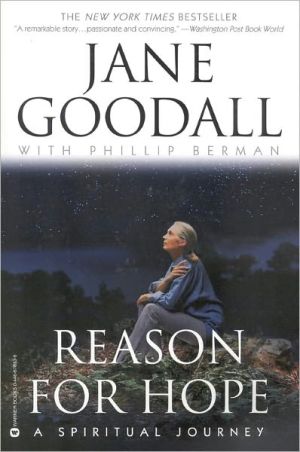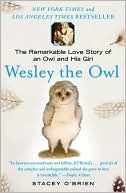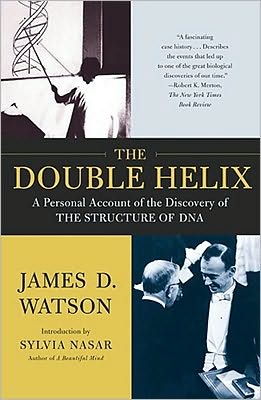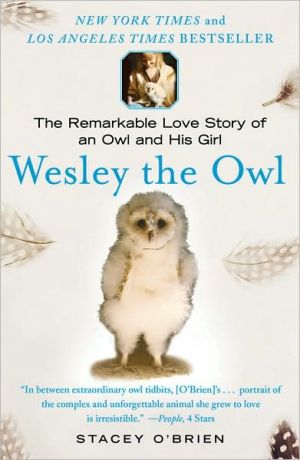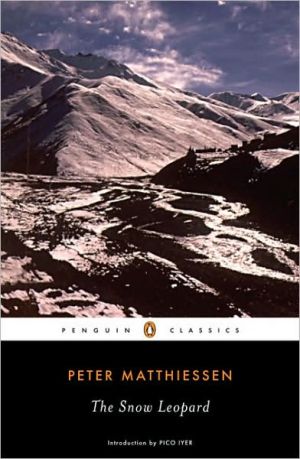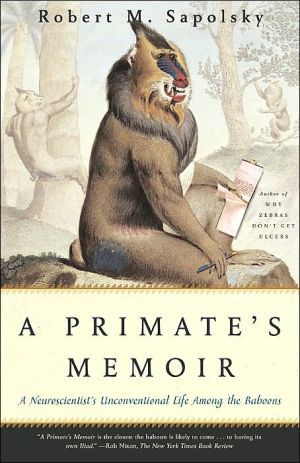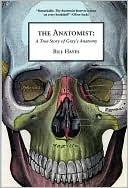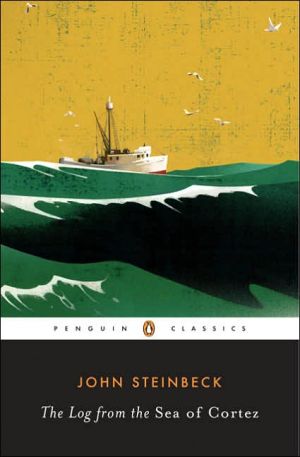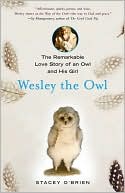Reason for Hope: A Spiritual Journey
Dr. Jane Goodall's revolutionary study of chimpanzees in Tanzania's Gombe preserve forever altered the very, definition of humanity.Now, in a poignant and insightful memoir, Jane Goodall explores her extraordinary life and personal spiritual odyssey, with observations as profound as the knowledge she has brought back from the forest.
Search in google:
Dr. Jane Goodall's revolutionary study of chimpanzees in Tanzania's Gombe preserve forever altered the very definition of "humanity." Now, in a poignant and insightful memoir, Jane Goodall explores her extraordinary life and personal spiritual odyssey, with observations as profound as the knowledge she has brought back from the forest. As a toddler she was entranced by all living things, and over the years the little girl inspired by Tarzan and The Jungle Book became the woman who found herself working with famed paleontologist Dr. Louis Leakey; accomplished scientific breakthroughs in Gombe; and, ultimately, became a champion of the environment. It has been a life blessed with faith, resolve, and purpose, though not without its crises. Jane Goodall endured the horrors of the London blitz and World War II, postwar hardships, vicious rumors and "establishment" assaults on the integrity of her work, a terrorist attack and hostage taking in Africa, and her husband's slow, agonizing death. But throughout, her religious convictions, although tested, have helped her survive-and Jane Goodall's pursuit of science has enhanced, not eroded, her belief in God. In this book she candidly shares her life—talking of the love and support of her mother, her son, her late husband, of friends and strangers—as well as the Gombe chimpanzees she introduced to the world nearly forty years ago. And she gives us convincing reasons why we can and must open ourselves to the saints within each of us. At one with nature and challenged by the man-made dangers of environmental destruction, inequality, materialism, and genocide, Dr. Goodall offers insight into her perceptions of these threats and celebrates the people who are working for earth's renewal. Here, indeed, is Reason For Hope. Bernadette Murphy Who can hear the name Jane Goodall without remembering a PBS special or a National Geographic profile of her work? Even Apple Computer's "Think Different" ad campaign has capitalized on the image of that lanky woman with the gray ponytail, gently holding a chimpanzee like an infant, that is emblazoned on our collective memory. It was through that British-inflected voice that we first learned of the workaday life and intrinsic beauty of our nearest evolutionary neighbor, the chimpanzee, and of the similarities between our two species. Goodall's role in radically altering our perception of human and animal life is presented clearly in Reason For Hope: A Spiritual Journey. Part memoir, part educational venture and part spiritual testimony, Goodall wrote the book to "answer the questions that people ask me, about my religious and spiritual beliefs, about my philosophy on life, about why I have hope for the future." Easily, the most fascinating part of Reason for Hope is Goodall's retelling of the early years of her career. This section of the book is alive with scenes from Gombe, Tanganyika (now Tanzania after its merger with Zanzibar), where she was the first person to live with and study the chimpanzees, and of how her observation of these animals deeply impacted her life. It's thrilling to read about discoveries that today we take for granted. For instance, only in following this account does one remember that before her study of the chimpanzee in 1960, humans were thought to be the only species capable of making and using tools. "That ability set us apart, it was supposed, from the rest of the animal kingdom," Goodall writes. As Goodall narrates the first instance of discovery-when she watches the chimpanzee, David Greybeard, pick a small leafy twig, strip the stem of leaves and then lower this "tool" into a termite hole to collect insects to eat-the sense of excitement and breakthrough is palpable. When she telegraphed these findings to her mentor, the paleontologist/archeologist Louis Leakey, he responded with a now-famous remark, "Ah! We must now redefine man, redefine tool or accept chimpanzees as human!" Indeed, when she writes of how her observations at Gombe challenged human uniqueness, one has a sense of the "violent scientific and theological uproar" her findings engendered. Goodall chose to stay out of the controversy, continuing instead to live her simple life in Gombe, learning more about the chimpanzees and what their lives say about humans. Somewhat disappointing to this reader, Goodall doesn't address the lack of respect she received as a woman and a scientist who was not traditionally trained. (Though she went on to receive a Ph.D., she held no degree when she made the famous 1960 discovery.) In Reason for Hope, she does touch on the topic obliquely: "There were some who tried to discredit my observations," she writes, but shies away from giving any details, either of her reaction to this lack of respect or how she believes her gender may have played a role. For example, when she was first selected by Leakey for the initial Gombe study, both the British protectorate and the government authorities of Tanganyika were horrified at the thought of a young white woman going off into the bush; they required that she take a European companion. In the narrative, she focuses on how she chose her indomitable mother, who became known among the local people as the "White Witchdoctor" for the simple medical care she provided. It's unfortunate that by drawing back at key personal points, Goodall undercuts her intention of showing her beliefs, relying instead on straightforward testimony. As a result, the portions on spirituality and religion, which are presented in a sentimentalized, didactic tone, are much less captivating than her visceral descriptions of life in the wild. Likewise, the most tedious part of this book is the reprimand to the human race for being selfish, greedy, environmentally stupid and generally cruel. It's not that her points aren't true and well-taken; it's just that the presentation of the material comes across as staid. Her prescription is to hasten our moral evolution in order to stem the tide of self-destruction: "We will have to evolve, all of us, from ordinary, everyday human beings-into saints!" In the telling of Goodall's personal life, this book is imbued with her politics and the spiritual beliefs that are as much a part of her life as the air she breathes. When she goes out of her way to advance her tenets, however, the work strays and the narrative wanes. Still, it's only an activist's zeal, a flaw easily forgiven in the context of her life and mission. Reason for Hope grants a startling look backwards at where we, the chimpanzees and the whole "green movement" have come from. Looking forward, as we teeter on the brink of the new millennium, learning more each day about the damage our species is doing to our planet, who among us can't use some reason for hope?
An Excerpt from Reason for Hope: A Spiritual Journey by Jane GoodallChapter 1\ Beginnings\ This is a story about a journey, the journey of one human being through sixty-five years of earth time: my journey. Traditionally, a story begins at the beginning. But what is the beginning? Is it the moment when I was born, with all the charming ugliness of the newborn human baby, in a hospital in London? The first breath I drew so that I could yell about the pain and indignity of my forced expulsion from the womb? Or should we start earlier, in the dark, moist secret place where one little wiggling sperm -- one out of millions -- managed to burrow into one little ovum -- the fertile egg that was biologically, magically, transformed into a baby? But that, really, is not the beginning. For the genes that were handed down to me by my parents were created long, long ago. And my inherited traits were molded by the people and the events surrounding my early years: the characters and position of my parents, the country into which I was born, and the era in which I grew up. So should the story start with my parents, with the historical and social events that shaped Europe in the 1930s, that molded Hitler and Churchill and Stalin? Or perhaps we should go back to the first truly human creature that was born of ape-men parentage, or back to the first little warm blooded mammal? Or should we go back and back through the mists of unknown time to when the first speck of life appeared on planet earth -- as a result of some divine purpose or cosmic accident? From there we could start my story, tracing the strange paths that life has taken: from amoeba, through apes, to minds that can contemplate the existence of a God, and strive to understand the meaning of life on earth and beyond the stars.\ I do not want to discuss evolution in such depth, however, only touch on it from my own perspective: from the moment when I stood on the Serengeti plains holding the fossilized bones of ancient creatures in my hands to the moment when, staring into the eyes of a chimpanzee, I saw a thinking, reasoning personality looking back. You may not believe in evolution, and that is all right. How we humans came to be the way we are is far less important than how we should act now to get out of the mess we have made for ourselves. How should the mind that can contemplate God relate to our fellow beings, the other life forms of the world? What is our human responsibility? And what, ultimately, is our human destiny? It will serve my purpose to begin, simply, from the time when I drew my first breath and screwed up my face to cry my first cry, on April 3, 1934.\ Through the years I have encountered people and been involved in events that have had huge impact, knocked off rough corners, lifted me to the heights of joy, plunged me into the depth of sorrow and anguish, taught me to laugh, especially at myself -- in other words, my life experiences and the people with whom I shared them have been my teachers. At times I have felt like a helpless bit of flotsam, at one moment stranded in a placid backwater that knew not, cared not, that I was there, then swept out to be hurled about in an unfeeling sea. At other times I felt I was being sucked under by strong, unknowing currents toward annihilation. Yet somehow, looking back through my life, with its downs and its ups, its despairs and its joys, I believe that I was following some overall plan -- though to be sure there were many times when I strayed from the course. Yet I was never truly lost. It seems to me now that the flotsam speck was being gently nudged or fiercely blown along a very specific route by an unseen, intangible Wind. The flotsam speck that was -- that is -- me.\ Without a shadow of a doubt my upbringing, the family into which I was born and the events that unfolded in the world around my childhood, shaped the person I would become. I grew up, with my sister, Judy (four years younger than I to the day), in an atmosphere that had become gently permeated by the ethics of Christianity. Our family's religion was never rammed down our throats, we were never forced to attend church, and we did not say grace before our meals (except at school). However, we were expected to say our prayers at night, kneeling on the floor at the side of the bed. From the beginning we were taught the importance of human values such as courage, honesty, compassion, and tolerance.\ Like most children before the age of TV and computer games, I loved being outside, playing in the secret places in the garden, learning about nature. My love of living things was encouraged, so that from the very beginning I was able to develop that sense of wonder, of awe, that can lead to spiritual awareness. We were by no means a wealthy family, but money was not important. It didn't matter that we couldn't afford a car, or even a bicycle, expensive holidays abroad -- we had enough to eat, some clothes to wear, and an abundance of love, laughter, and fun. Indeed, mine was the very best kind of childhood: because every penny mattered, everything that was extra such as an ice cream, a journey on a train, a cinema, was a treat, exciting, to be treasured and remembered. If only everyone could be blessed with such a childhood, such a family. How different, I believe, the world would be.\ As I look back over the sixty-five years of my life to date it seems that things just fell into place. I had a mother who not only tolerated but also encouraged my passion for nature and animals and who, even more important, taught me to believe in myself. Everything led in the most natural way, it seems now, to that magical invitation to Africa in 1957, where I would meet Dr. Louis Leakey, who would set me on my way to Gombe and the chimpanzees. Indeed, I have been extraordinarily lucky -- although as my mother, Vanne, always says, luck was only part of the story. She has always believed, as did her mother, that success comes through determination and hard work and that "the fault... is not in our stars but in ourselves that we are underlings." I certainly believe that is true. Yet though I have worked hard all my life -- for who wants to be an "underling" if it can be avoided! -- I must admit that the "stars" seem to have played their part too. After all, I didn't strive (so far as I know) to be born into my own wonderful home. And then there was Jubilee, bought for me as a present by my father (Mortimer "Mort" Goodall), when I was just over one year old. Jubilee was a large, stuffed chimpanzee toy, created to celebrate the birth of Jubilee, the first chimpanzee infant ever born at the London Zoo. My mother's friends were horrified by this toy, thinking it would frighten me and give me nightmares. But Jubilee instantly became my most cherished possession and accompanied me on nearly all my childhood adventures. To this day, old Jubilee is still with me, almost hairless from all the loving, spending most of his time in my bedroom in the house where I grew up in England.\ I was always absolutely fascinated by animals of all sorts. Yet I was born right in the heart of London, where animals were limited to dogs and cats, sparrows, pigeons, and some insect life in the small garden shared by the inhabitants of the mews where we lived. Even when we moved to a house just outside the city, from where my father would commute each day to his engineering job, nature was subjugated to pavement, houses, and manicured gardens.\ My mother, Vanne, now aged ninety-four, has always loved to tell stories about my early fascination with animals and concern for their welfare. One of her favorites is of the time when, around the age of eighteen months, I collected a whole handful of earthworms from the London garden and took them to bed with me.\ "Jane," she said, staring at the wriggling collection, "if you keep them here they'll die. They need the earth."\ So I hurriedly collected up all the worms and toddled back with them into the garden.\ Soon after this, we went to stay with some friends who had a house near a wild rocky beach in Cornwall. When we went down to the sea I was enthralled by the tide pools and their teeming life. No one realized that the seashells I carried back to the house in my bucket were all alive. When Vanne came up to my room she found little bright yellow sea snails crawling everywhere -- the bedroom floor, up the walls, behind the wardrobe. When she explained that the snails would die when taken from the sea, I became hysterical. The entire household, she says, had instantly to drop what it was doing and help me collect the snails so that they could be rushed back to the sea.\ One story has been told many times because it shows how, even as a four-year-old, I already had the makings of a true naturalist. Vanne had taken me to stay with my father's mother, Mrs. Nutt (I called her Danny Nutt because I could not say "granny"), at the family farm. One of my tasks was to collect the hens' eggs. As the days passed, I became more and more puzzled. Where on a chicken was there an opening big enough for an egg to come out? Apparently no one explained this properly, so I must have decided to find out for myself. I followed a hen into one of the little wooden henhouses -- but of course, as I crawled after her she gave horrified squawks and hurriedly left. My young brain must have then worked out that I would have to be there first. So I crawled into another henhouse and waited, hoping a hen would come in to lay. And there I remained, crouched silently in one corner, concealed in some straw, waiting. At last a hen came in, scratched about in the straw, and settled herself on her makeshift nest just in front of me. I must have kept very still or she would have been disturbed. Presently the hen half stood and I saw a round white object gradually protruding from the feathers between her legs. Suddenly with a plop, the egg landed on the straw. With clucks of pleasure the hen shook her feathers, nudged the egg with her beak, and left. It is quite extraordinary how clearly I remember that whole sequence of events.\ Filled with excitement I squeezed out after her and ran home. It was almost dark -- I had been in that small stuffy henhouse for nearly four hours. I was oblivious of the fact that no one had known where I was, and that the whole household had been searching for me. They had even called the police to report me missing. Yet despite her worry, when Vanne, still searching, saw the excited little girl rushing toward the house, she did not scold me. She noticed my shining eyes and sat down to listen to the story of how a hen lays an egg: the wonder of that moment when the egg finally fell to the ground.\ Certainly I was lucky to be provided with a mother wise enough to nurture and encourage my love of living things and my passion for knowledge. Most important was her philosophy that her children should always try their very best. How would I have turned out, I sometimes wonder, had I grown up in a house that stifled enterprise by imposing harsh and senseless discipline. Or in an atmosphere of overindulgence, in a household where there were no rules, no boundaries drawn. My mother certainly understood the importance of discipline, but she always explained why some things were not allowed. Above all, she tried to be fair and to be consistent.\ When I was five years old and my sister, Judy, was one, we all went to live in France, as my father wanted very much for us to grow up speaking fluent French. But this was not to be, for, within a few months of our arrival, Hitler occupied Czechoslovakia, an act that would lead to World War II. It was decided that we should return to England, and since our house near London had been sold we went to stay with Danny Nutt in the old manor house where my father had grown up. Built of gray stone, it nestled into the Kent countryside, surrounded by fields of grazing cows and sheep. I passionately loved my time there. On the grounds of the manor house were the ruins of a castle where King Henry Viii had held one of his wives -- crumbling blocks of gray stone filled with spiders and bats. Inside the manor house itself there was always the faint smell of the oil lamps that were lit each evening, for there was no electricity. Even now, more than sixty years later, the smell of oil lamps always takes me back to those magical days. But they did not last long. The impending horror of war was coming closer and, knowing my father would join the army at the first opportunity, Vanne took me to stay with her own mother at the Birches, an 1872 Victorian red-brick house in Bournemouth.\ On September 3, 1939, it happened: England declared war on Germany. I was only five and a half years old at the time, yet I remember the occasion. The whole family was in the drawing room. The atmosphere was tense as everyone listened to the news on the wireless; after the announcement there was silence. Of course I didn't understand what was going on, but that silence, the sense of impending doom, was very frightening. Even now, half a century later, I cannot hear the chiming of Big Ben -- which always preceded the Bbc news -- without an involuntary shock of apprehension.\ As expected my father enlisted immediately, so the Birches, just a few minutes' walk from the English Channel, became my home. It was there, on the south coast of England, that I would spend the rest of my childhood and adolescence. Indeed, this much loved house is still my home, my refuge, when I am in England. It is where I am writing this book.\ My maternal grandmother, known to all as Danny (again because I could not pronounce "granny"), was the undisputed head of the extended family that shared the Birches. She was a strong, self-disciplined, iron-willed Victorian who ruled over us with supreme authority and had a heart big enough to embrace all the starving children of the world. Her husband, a Welshman, had been a Congregational parson and had died before I was born. He had also been a brilliant scholar, receiving degrees in theology from three universities -- Cardiff, Oxford, and Yale. And Danny, who survived him by more than thirty years, kept all his letters, tied up in red ribbon, and often read them before she slept. Also, she told us, she counted her blessings every night as she lay in bed, waiting for sleep. Above all, she had a horror of going to bed without making peace with those around her. There are always little upsets, minor rows, when many people live together -- these should be resolved before bedtime; "Let not the sun set on thy wrath" she would quote. And to this day I hear her voice, when I quarrel with a friend: "How terrible you would feel if he (or she) should die before you made it up, before you said sorry. " I think that is why the words of Walter de la Mare strike home when he bids us "Look thy last on all things lovely every hour."\ We shared the Birches with my mother's two sisters, Olwen -- immediately dubbed Olly by me -- and Audrey, who preferred to be called by her Welsh name, Gwyneth. Their elder brother, Uncle Eric, who was a surgeon, came home from his hospital in London most weekends. And soon after the start of the war we took in two single women who, like hundreds of others, were left homeless by the ever-spreading chaos and destruction in Europe. All households were asked to find space for such unfortunates. And so the Birches, at that time, was an active place, filled with people of all sorts. We simply had to learn to get along with each other. The house had (and still has) a warm atmosphere; it was full of character and, despite the number of people, filled with peace. Best of all there was a big garden or backyard with many trees, and a green lawn and lots of secret places behind the bushes where, of course, gnomes and fairies lived and danced in the moonlight. My love for nature grew as I watched birds making their nests, spiders carrying their egg sacs, squirrels chasing each other round the trees.\ My memories of childhood are almost inseparable from memories of Rusty, an endearing black mongrel dog with a white patch on his chest. He was my constant companion, and he taught me so much about the true nature of animals. There were other pets too at different times. A succession of cats, our two guinea pigs, a golden hamster, various tortoises, a terrapin, and a canary, Peter, who slept in a cage but was free to fly about the room in the daytime. For a while Judy and I each had our own "racing" snails with numbers painted on their shells. We kept them in an old wooden box with a piece of glass on the top and no bottom so they could eat the dandelion leaves as we moved the box around the lawn.\ In one part of the garden there was a little clearing behind some thick bushes where Judy and I established a "camp" for the meetings of our club, a club which had just four members, we two and our best friends Sally and Susie Cary, who came to stay every summer holiday. In the camp we kept an old trunk containing four mugs, small supplies of cocoa and tea, and a spoon. We would light a fire and boil water in a tin can balanced on four rocks. Sometimes we went there for midnight "feasts"; during the war years almost everything was rationed, so we seldom had more than a biscuit or a crust of bread saved from our meals. It was the excitement, the silent creeping from the house, the lawn and trees ghostly in the moonlight, that we loved. Our feeling of achievement as we defied the rules provided the fun, not the insignificant bits and pieces that we gathered to eat. To this day, food is supremely unimportant to me.\ Like most children who grow up in happy homes, I never had cause to question the religious beliefs of my family. Did God exist? Of course. God was as real to me then as the wind that rustled through the trees in our garden. God somehow cared for a magical world, full of fascinating animals and people who were mostly friendly and kind. It was an enchanted world for me, full of joy and wonder, and I felt very much a part of it.\ Danny went to church every Sunday and at least one of us always went with her. Indeed, Audrey never missed a service, and Olly sang in the choir. But we children were never forced to go with them, nor did we go to Sunday School. Nevertheless, Danny tried to make sure that our beliefs weren't limited to the animistic worship of nature and animals. She believed deeply in God the Father, God the Son, and God the Holy Spirit. She wanted Judy and me to share her belief for the comfort it would bring. And so she did her best to ensure that the ethics and wisdom of Christ's teachings influenced our lives. The rules that we had to obey were the simple ones contained in the Ten Commandments. She would sometimes quote texts from the Bible. Her very favorite, which I took as my own, was: "As thy days, so shall thy strength be." This has helped me through the hardest times of my life. Somehow we shall find the strength to get through a day of unhappiness, of suffering, of heartache. Somehow, I always have.\ As a child I was not at all keen on going to school. I dreamed about nature, animals, and the magic of far-off wild and remote places. Our house was filled with bookshelves and the books spilled out onto the floor. When it was wet and cold, I would curl up in a chair by the fire and lose myself in other worlds. My very favorite books at the time were The Story of Dr. Dolittle, The Jungle Book, and the marvelous Edgar Rice Burroughs Tarzan books. I also loved The Wind in the Willows, and, to this day, I remember the beautiful and mystical experience shared by Ratty and Mole when they found the missing otter cub curled up between the cloven hoofs of the sylvan god, Pan. And I was enthralled by one other book: At the Back of the North Wind -- a story full of Victorian moralizing that would make no sense to the children of today. Little Diamond, its boy hero, slept in a loft above Big Diamond, the cab horse upon whom the family, which was poor, depended for its livelihood. The icy north wind blew into Little Diamond's loft, and then appeared to the boy as a beautiful woman, sometimes small as a tinkerbell, sometimes tall as an elm tree. Then she would take him to see the world, safe in the still place behind the wind, curled into a nest that she made for him in her beautiful, long, thick hair. It was magic, mystical, and it introduced me to human suffering in story form, preparing me, in a way, for the real-life suffering of war. For the war was raging in Europe and, all too soon, it would make itself felt even in sleepy Bournemouth.\ More and more often we would hear the drone of a German plane and the thunder of an exploding bomb. We were fortunate, as nothing fell close enough to do damage. But the windows rattled loudly, and some panes of glass were cracked. How well I still remember the wailing of the air-raid warnings. They usually sounded sometime in the night, for that was when the bombers came over. Then we had to leave our beds and huddle together in the little air-raid shelter that was erected in our house in the small room (once a maid's bedroom) that, even today, is known as the "air-raid." It was a low, steel-roofed cage about six feet by five feet and only four feet high. Thousands of these were issued to households who were living in potential danger zones. And there we had to stay -- sometimes as many as six adults as well as we two children -- until the welcome sound of the "All Clear."\ By the time I was seven I was used to news of battles, of defeats and of victories. Knowledge of man's inhumanity to man became more real as the newspapers and radio hinted at unspeakable horrors perpetrated on the Jews of Europe and the cruelties of Hitler's Nazi regime. Although my own life was still filled with love and security, I was slowly becoming aware of another kind of world altogether, a harsh and bitter world of pain and death and human cruelty. And although we were among the luckiest, far away from the horror of massive bombings, nevertheless, signs of war were all around: Our own father, far away and in uniform, somewhere in the jungles of Singapore. Uncle Eric and Olly setting off on air-raid duty, out into the dark night when the air-raid warning sounded. Audrey working as a land girl. The blackout that dominated our lives every evening. The American soldiers with their tanks who occupied the road outside the Birches. One of them became a real friend, but then went off to the front with his regiment and was, like so many hundreds, killed.\ Even we had one narrow escape. It was during the fourth summer of the war. Judy and I, with our best friends Sally and Susie, were spending a week's holiday a few miles along the coast where one could actually get onto the sand (England was prepared for a possible German invasion, so most of the coastline was barricaded by miles and miles of barbed wire). One day, as our mothers sat on the sand and we children played, Vanne suddenly decided to take a different route back to our little guest house -- a very long way around that meant we would miss lunch. But she was determined. Ten minutes after we set off, and as we were walking over some sand dunes, we heard the faint sound of a plane flying very high, heading south toward the sea. I can still remember, absolutely vividly, gazing up and seeing two tiny black objects, looking no bigger than cigars at that height, dropping from the plane into the blue, blue sky. German bombers often dumped their bombs along the coast if they had not managed to get rid of them on designated targets. It was safer when they met our planes on their way home. I can still remember the two mothers telling us to lie down, then trying to shield us with their bodies. I can still recall the terrifying explosions as the bombs hit the ground. And one of them made a deep crater halfway up the lane -- exactly where we would have been but for Vanne's premonition.\ When the war finally ended in Europe on May 7, 1945, the grim rumors about the Nazi death camps were confirmed. The first photographs appeared in the newspapers. I was eleven years old at the time, very impressionable and imaginative. Although the family would like to have spared me the horrifying Holocaust pictures, I had never been prevented from reading the newspapers and they did not stop me then. Those photographs had a profound impact on my life. I could not erase the images of walking skeletons with their deep-sunk eyes, their faces almost expressionless. I struggled to comprehend the agony of body and mind these survivors had gone through, and that of all the hundreds of thousands who had perished. I still remember seeing, with shock, a photo of dead bodies piled on top of one another in a huge mound. That such things could happen made no sense. All the evil aspects of human nature had been given free rein, all the values I had been taught -- the values of kindness and decency and love -- had been disregarded. I can remember wondering if it was really true -- how could human beings do such unspeakable things to other human beings? It made me think of the Spanish Inquisition, and all the medieval tortures that I had once read about. And the terrible suffering that had been inflicted on black slaves (I had once seen a picture of rows of Africans chained in the galleys, a brutal-looking overseer standing with an upraised whip in his hand). I began to wonder, for the first time, about the nature of God. If God was good and all-powerful as I had been led to believe, how could He allow so many innocent people to suffer and die? Thus the Holocaust dramatically introduced me to the age-old problem of good and evil. This was not an abstract theological problem in 1945; it was a very real question that we had to face as the horror stories mounted.\ I found that things were not as clear-cut as they once had seemed; that life was full of ambiguity and contradictions. The Holocaust unsettled me deeply. All my life I have felt compelled to buy books about the Nazis and the death camps. How could people behave that way? How could anyone endure and survive such torture? It seems I have been asking these questions my entire life.
\ From Barnes & NobleThe Barnes & Noble Review \ Jane Goodall is one of the most celebrated women of our times -- her work with chimpanzees in Tanzania greatly advanced our understanding of human and animal behavior. She is also a popular and inspiring figure -- a friend of mine recalls that in high school she fantasized about one day living in the wild with a little son named Grub -- just like Jane, the National Geographic cover girl. \ In Reason for Hope, Goodall offers a fascinating and candid look at her impressive life. She reveals what her private life was like during the time of her groundbreaking work, and she explores the environmental concerns that now keep her on a hectic lecture and fundraising schedule. What's most enjoyable -- and surprising -- about her memoir is how such a serious and important figure turns out to be vulnerable, romantic, and a bit of an emotional eccentric.\ One might expect that Jane, as a little British girl, would have been deeply taken with animals and the natural world. And she was: She collected earthworms and hung around in the henhouse for hours. But one doesn't expect to find out that the young Jane was like a Brontë character, whirling around with intense passions -- "an aspiring poet and martyr." Preoccupied with torture and saints, she wrote poems about "oozing blood" and "red-hot metal bores." Then, at a "naive nineteen," she went off to London: "I met young men with whom I flirted deliciously and who took me out to dinner and the theater." This "fantastic and innocent" experience ended when she saved up her waitressing earnings and went off to meet a childhood friend in Africa.\ Hired as personal assistant to the famed paleontologist Louis Leakey, Goodall might have merely transcribed notes and served coffee. She had no training, no degree, no academic credentials. Why did Leakey choose her to conduct important scientific research? Clearly, her passionate, enthusiastic personality worked in her favor. She was willing to take risks, to make original observations. Proper researchers would have never given names like "Fifi" and "Flo" to the chimpanzees, much less described them as having personalities. But this nontraditional approach was one reason Goodall's work appealed to so many average people. She refused to see science and nature as separate from humanity and passion.\ In the post-Leakey era, Goodall faced events that might have made her more cynical or pragmatic. She became more aware of the intense aggression and cruelty chimpanzees were capable of. Her beloved second husband, a dashing member of Parliament, was stricken with a sudden and fatal cancer. Her career was hurt by the scandal that swirled around her after four students at her camp were kidnapped by rebels. In an honest, straightforward manner, Goodall reveals how these events devastated her -- we see her tearful and terrified and unsure.\ As well as her own personal struggles, Goodall discusses larger concerns about environmental damage, genocide, and animal abuse. She shares her admiration for activists and spiritual leaders and her belief that kindness will triumph over evil and greed. But it's ultimately the lack of scientific jargon and political diatribes that make Reason for Hope such an enjoyable and original book. Who would expect that a revered scientist would speak so often of being "enchanted," "lost in awe at the beauty," and "experiencing the ecstasy of the mystic"? And as for poetry, she still writes it -- several of her most recent works are included here. Margot Towne\ \ \ \ \ \ Bernadette MurphyWho can hear the name Jane Goodall without remembering a PBS special or a National Geographic profile of her work? Even Apple Computer's "Think Different" ad campaign has capitalized on the image of that lanky woman with the gray ponytail, gently holding a chimpanzee like an infant, that is emblazoned on our collective memory. It was through that British-inflected voice that we first learned of the workaday life and intrinsic beauty of our nearest evolutionary neighbor, the chimpanzee, and of the similarities between our two species. \ Goodall's role in radically altering our perception of human and animal life is presented clearly in Reason For Hope: A Spiritual Journey. Part memoir, part educational venture and part spiritual testimony, Goodall wrote the book to "answer the questions that people ask me, about my religious and spiritual beliefs, about my philosophy on life, about why I have hope for the future."\ Easily, the most fascinating part of Reason for Hope is Goodall's retelling of the early years of her career. This section of the book is alive with scenes from Gombe, Tanganyika (now Tanzania after its merger with Zanzibar), where she was the first person to live with and study the chimpanzees, and of how her observation of these animals deeply impacted her life. It's thrilling to read about discoveries that today we take for granted. For instance, only in following this account does one remember that before her study of the chimpanzee in 1960, humans were thought to be the only species capable of making and using tools. "That ability set us apart, it was supposed, from the rest of the animal kingdom," Goodall writes. As Goodall narrates the first instance of discovery-when she watches the chimpanzee, David Greybeard, pick a small leafy twig, strip the stem of leaves and then lower this "tool" into a termite hole to collect insects to eat-the sense of excitement and breakthrough is palpable. When she telegraphed these findings to her mentor, the paleontologist/archeologist Louis Leakey, he responded with a now-famous remark, "Ah! We must now redefine man, redefine tool or accept chimpanzees as human!" Indeed, when she writes of how her observations at Gombe challenged human uniqueness, one has a sense of the "violent scientific and theological uproar" her findings engendered. Goodall chose to stay out of the controversy, continuing instead to live her simple life in Gombe, learning more about the chimpanzees and what their lives say about humans.\ Somewhat disappointing to this reader, Goodall doesn't address the lack of respect she received as a woman and a scientist who was not traditionally trained. (Though she went on to receive a Ph.D., she held no degree when she made the famous 1960 discovery.) In Reason for Hope, she does touch on the topic obliquely: "There were some who tried to discredit my observations," she writes, but shies away from giving any details, either of her reaction to this lack of respect or how she believes her gender may have played a role. For example, when she was first selected by Leakey for the initial Gombe study, both the British protectorate and the government authorities of Tanganyika were horrified at the thought of a young white woman going off into the bush; they required that she take a European companion. In the narrative, she focuses on how she chose her indomitable mother, who became known among the local people as the "White Witchdoctor" for the simple medical care she provided. It's unfortunate that by drawing back at key personal points, Goodall undercuts her intention of showing her beliefs, relying instead on straightforward testimony. As a result, the portions on spirituality and religion, which are presented in a sentimentalized, didactic tone, are much less captivating than her visceral descriptions of life in the wild. Likewise, the most tedious part of this book is the reprimand to the human race for being selfish, greedy, environmentally stupid and generally cruel. It's not that her points aren't true and well-taken; it's just that the presentation of the material comes across as staid. Her prescription is to hasten our moral evolution in order to stem the tide of self-destruction: "We will have to evolve, all of us, from ordinary, everyday human beings-into saints!"\ In the telling of Goodall's personal life, this book is imbued with her politics and the spiritual beliefs that are as much a part of her life as the air she breathes. When she goes out of her way to advance her tenets, however, the work strays and the narrative wanes. Still, it's only an activist's zeal, a flaw easily forgiven in the context of her life and mission. Reason for Hope grants a startling look backwards at where we, the chimpanzees and the whole "green movement" have come from. Looking forward, as we teeter on the brink of the new millennium, learning more each day about the damage our species is doing to our planet, who among us can't use some reason for hope?\ \ \ \ Katy Payne...subtle and provocative...profound, delicate and accessible confessions...To track Goodall's spiritual journey is to become aware that hope is essential to action...\ — NY Times Book Review\ \ \ \ \ Publishers WeeklyThe world's most famous, and perhaps most beloved, female scientist has previously related much of her life's outer journey--most notably in In the Shadow of Man and Through a Window, which described her groundbreaking work with the chimpanzees of Gombe, in Africa. In this marvelous book, however, Goodall reveals--with clarity, great passion and purpose--her inner journey. How invigorating it is to read the memoir of a scientist who proclaims frankly, and in language often infused with power and grace (a nod to Goodall's coauthor Berman, author of The Journey Home, etc.), an abiding faith in the sacredness of all life. Goodall, who's 65, covers her entire life here, from her earliest years in England, raised by a strong and loving family, through her apprenticeship under Louis Leakey and her years at Gombe, to her more recent work as an activist for environmental causes and animal rights. There are passages that verge on the mystical ("I and the chimpanzees, the earth and trees and air, seemed to merge, to become one with the spirit power of life itself"), a scattering of not terrific poems and great swaths of rapturous nature writing. The book's tone is highly emotional, sometimes sentimental, but Goodall is no naif. A chapter entitled "The Roots of Evil" describes her shocking discovery of chimps' capacity for cannibalistic attacks on members of their own community; "Death" details her despair at the suffering and demise of her husband, Derek, from cancer. Despite the darkness, however, throughout her life's adventures--and there are enough, in jungle and city, to make this book viscerally as well as morally thrilling--Goodall has nurtured a fundamental understanding that goodness can prevail, with each person's help. This is a moving and inspiring book that will be treasured by all concerned about the fate of the planet and its inhabitants. 16 pp. of b&w photos. Simultaneous Warner AudioBook; author tour. (Sept.) Copyright 1999 Cahners Business Information.\ \ \ \ \ Library JournalIn her introduction, primatologist Goodall describes how she is frequently asked about the source of her apparent peace and optimism in the face of environmental destruction and human and animal suffering. She offers this autobiography as a meditation on how her spiritual beliefs evolved in response to major events of her lifetime, including her childhood in World War II-era England; early days at Gombe with the chimpanzees; rearing her only child, Grub; divorce, remarriage, and the loss of her second husband to cancer; and the turning point in her career when she dedicated herself to the plight of chimpanzees held in captivity for biomedical research. Throughout, she blends a disarming humility and sense of wonder at the natural world with a determined belief that humankind is capable of doing better. Occasional oversimplifications (such as equating dual-income families with child neglect) do not detract from the overall power of her book. Goodall challenges each of us to become "saints" in order to achieve a new relationship with nature, each other, and whatever higher power we may call "God." A very thought-provoking and wonderful read; recommended for all libraries. [Previewed in Prepub Alert, LJ 5/1/99.]--Beth Clewis Crim, Prince William P.L., VA Copyright 1999 Cahners Business Information.\ \ \ \ \ Los Angeles TimesThe Einstein of behavioral sciences.\ \ \ \ \ Boston GlobeBeing with Jane Goodall is like a walk with Gandhi.\ \ \ \ \ Christian Science MonitorA heroine, in a hero-less time.\ \ \ \ \ Encyclopædia BritannicaWithout question one of the most significant contributors to our knowledge of the world around us.\ \ \ \ \ Rocky Mountain NewsThe scarcity of Jane Goodalls...may be more ominous than the scarcity of chimpanzees.\ \
